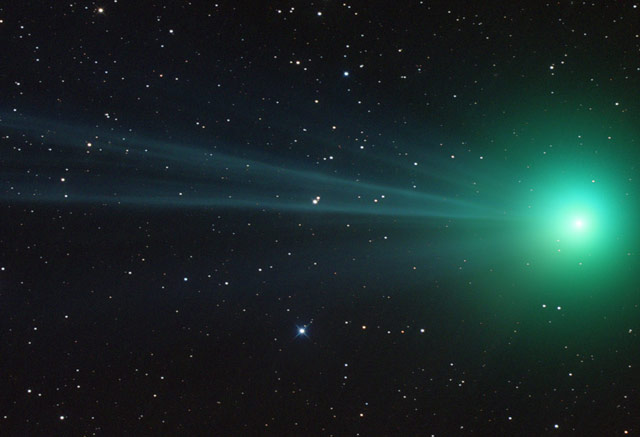Hi everybody
Here's the latest article from the Astronomy site at BellaOnline.com.
Edward Charles Pickering
Edward Pickering was a leading light of 19th century astronomy who made the Harvard College Observatory into an institution with an international reputation. He was honored for his work by scientific societies in several countries, but his name is now known from his employing “Pickering's harem”.
http://www.bellaonline.com/articles/art302072.asp
*Happy Birthday, Edwin Hubble*
Edwin Hubble was born on November 20, 1889. He showed that the Milky Way was not the Universe, but one galaxy amongst many. His work on the redshift of galaxies, showing that they were moving away from us, was evidence of the expansion of the Universe. The Hubble Space Telescope is named for him.
*MAVEN*
NASA's probe Mars Atmosphere and Volatile EvolutioN Mission (MAVEN) was launched on November 18, 2013. From its data scientists conclude that when the Martian magnetic field died, the solar wind began to strip away the atmosphere. And with no atmosphere, surface water was also lost. Mars was turned from a planet with a thick atmosphere and abundant surface water into the desert we see today. It took about half a million years.
*Galactic collision*
Our galaxy the Milky Way is going to collide with the Andromeda Galaxy. Nothing for you to worry about however, it won't happen for a few billion years. Here is a simulation of the encounter: https://youtu.be/PrIk6dKcdoU There's a little bit in German at the beginning. The Milchstrasse is the Milky Way. And each second in the video represents a million years. Fascinating.
*Taurid fireball*
If you follow Astronomy Picture of the Day, you may have already seen this photo of a bright fireball: http://apod.nasa.gov/apod/image/1511/OrionFireball_Scheggia_1080.jpg If not, do have a look. The fireball, probably from the Taurids meteor shower, was not only bright, but created an orange glow that lingered for several minutes. This is called a persistent train. The Orion Nebula is visible on the upper left and the bright blue star Rigel, part of the constellation of Orion, is visible to the right. The Taurids occur in late October/early November. They're not spectacular in terms of large numbers, but the ones you see tend to be bright, slow-moving and leave a trail. (Image Credit: Ivo Scheggia)
Please visit http://astronomy.bellaonline.com/Site.asp for even more great content about Astronomy.
I hope to hear from you sometime soon, either in the forum http://forums.bellaonline.com/ubbthreads.php/forums/323/1/Astronomy or in response to this email message. I welcome your feedback!
Do pass this message along to family and friends who might also be interested. Remember it's free and without obligation.
I wish you clear skies.
Mona Evans, Astronomy Editor
http://astronomy.bellaonline.com
One of hundreds of sites at BellaOnline.com
.
astronomy Newsletter








